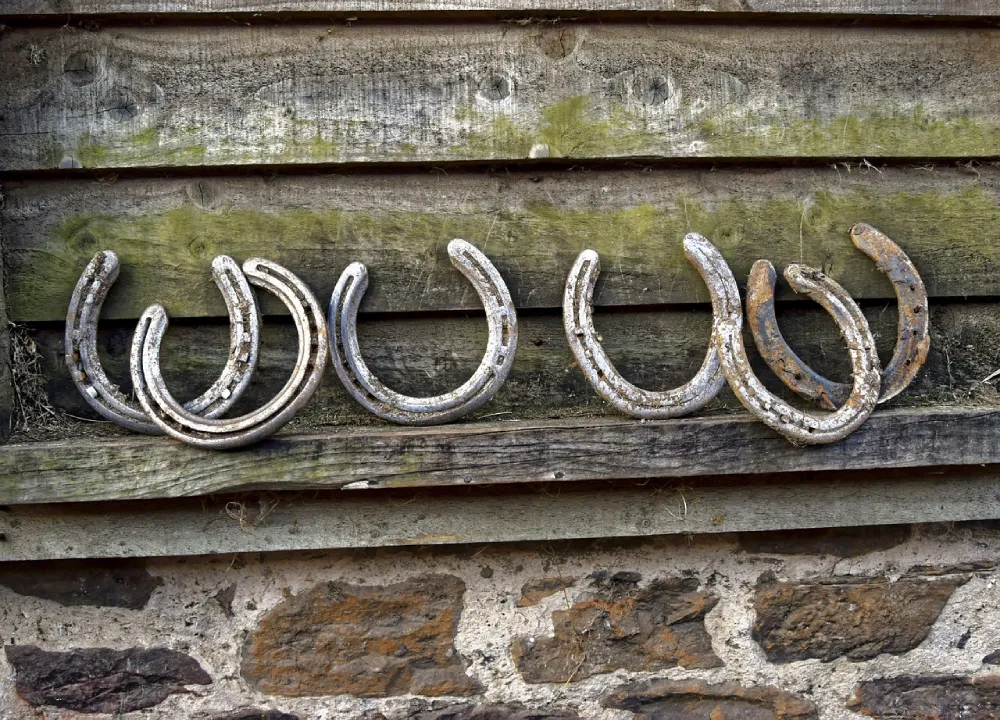Horseshoes are very common; it is uncommon to meet someone who does not know what they look like. But why do they even exist? And why do almost all horses (apart from wild horses) wear them?
On working horses, horseshoes are used to increase the durability of the hoof. Keratin, the same substance that makes up your fingernail, makes up the hoof itself. The frog, which is circled in the image above, is a sensitive and tender interior region of the hoof that can be hurt. Putting a shoe on the hoof helps to reduce the natural wear and tear that occurs as horses walk, which keeps the frog in good health.
What are Horseshoes Made Of?
The majority of horseshoes are constructed of steel, though there are few outliers. Because aluminum horseshoes are lighter and perform better when speed is the primary goal, racehorses typically wear them. In the event that a horse has a foot or hoof damage, there are also “boots” that they can put on. These “boots” are constructed of rubber and include a built-in rubber horseshoe that offers a considerably softer walking surface and greater support.
How are Horseshoes Put On?
Farriers are those who fit horses with horseshoes. Nails are used by farriers to secure the horseshoe to the foot. Horses don’t feel anything when the horseshoe is fastened to the hoof since, as we previously stated, their hooves are made of the same material as your nail. The farrier bends the nails so they form a type of hook after driving them into the outside edge of the hoof. To guarantee a good fit, they then file away any remaining sharp edges and a portion of the hoof. You can tell when they need to be reshod because when the hoof spreads out, it will eventually cross over the shoe.
What is “Barefoot?”
You might occasionally come upon a horse without any horseshoes. Wild horses also do not wear shoes. In the working environment, horses who don’t wear shoes typically do so because they have a foot issue. Sometimes their hooves are too fragile or a piece of their hoof may have broken off, making it difficult to properly fasten the shoe. These horses will have more restrictions on how much work they can do, but they can still go on trail rides and work the farm.
First off, because they do not “work” as hard or as frequently as a horse with an owner, wild horses are able to survive without shoes. As a result, they wear down their hooves more slowly than they grow. Second, no one is responsible for their care; as a result, they are left to handle situations where a shoe may be put on an owned horse, such as an injured frog.
Final Thoughts on the Horseshoe
A corrected horseshoe is necessary to maintain your horse’s health and working potential. You must have sufficient practical understanding of horse gait, horse hoof structure, horse hoof diseases, hoof trimming, and horseshoeing in order to own a horse. In the aforementioned essay, I tried to go into detail about the steps, tools, and checking and removing the horseshoe. Please let your friends know if the information mentioned above was helpful to you.


